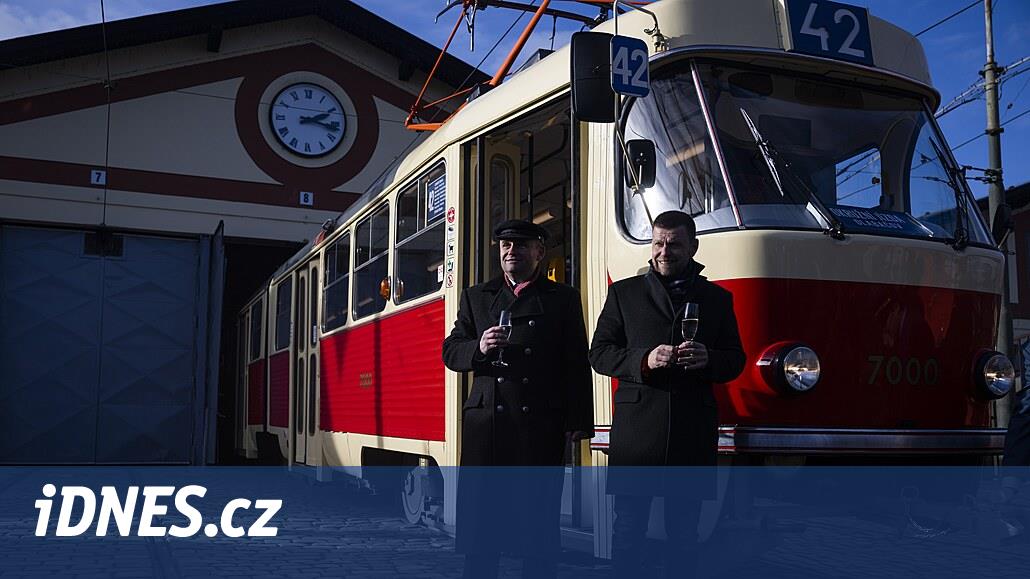Twenty years since the disaster: Central Bohemia and Prague will remember the devastating floods
She brought horrors, few could imagine in advance. As well as sensing what is actually at stake. After all, at least two generations have already heard it in school: the great destructive ones belong to the past; we are protected by dams. The year 202 brought not only a tremendous lesson with 17 ruined lives and damage calculated at 73 billion crowns, but also the idea of how to better secure endangered locations.
First impressions: the problem is far away
At first, it did not seem that the inhabitants of the central part of Bohemia should be particularly worried. The intense rains in the south and south-west of Bohemia, after which the rivers swelled, could at first give the impression of distant events from television news. Yes, a boating trip to the Vltava River or a visit to Český Krumlov or perhaps even České Budějovice will have to be postponed. A few days later, many people had no idea about the trip. There were other concerns on the agenda: where to lay your head after the evacuation? However, if it were not for the Vltava Cascade, the situation would be even worse. The dams really played a key role, confirms the CEO of the Vltava River Basin, Petr Kubala. They’ve proven themselves – and they’ve held up with honor, he added.
The Vltava basin invested almost 5 billion crowns in measures against floods
The first wave of heavy rainfall then came on August 6-7. Nebeská stavela opened mainly in the Český Krumlov region and in the Novohradské hory. Then it stopped and it looked like the rest of the republic was going to prepare aid for South Bohemia. When another wave of rain came on August 11-13, everything was different. “Heavy rainfall gradually affected almost the entire area of the Vltava basin and caused extreme flows in almost all streams,” recalls Kubala, adding that the measured values in many places exceeded all known flood flows. “Most of the high water marks from previous floods were hidden below the surface during the climaxes of this flood,” he recalled.
The Central Bohemian region was more or less spared by the first wave of precipitation. It manifested itself especially on the Vltava, Malša and below their confluence, on the upper Lužnica, in the middle Otava basin and on the tributaries of the Berounka – Úslava, Úhlava and Radbuze. In the Sázava basin, precipitation mainly affected the Želivka basin, where, however, the Švihov reservoir continued to supply the inhabitants with drinking water. The first wave of the flood was relatively successfully tamed with the help of the Vltava Cascade: the Vltava in the Prague-Chuchle profile, below the confluence with Berounka and Sázava, was managed to be kept at the level of the third stage of flood activity on August 9: up to a flow of 1500 m3/s. A day later, on August 10, the Vltava in Prague fell to the second flood stage.
It was impossible to hold more water
The disaster was brought about by the second wave of rains (preceded by local torrential rains in many places) and the second flood wave. It came with a frightening speed: the precipitation, which at first fell in practically the same places as four days earlier and then spread over the area due to the influence, the saturation of the basin almost no longer needs to be absorbed: it flowed directly into the rivers. The Vltava cascade again mitigated the consequences, but the onslaught was such that it exceeded its technical capabilities. The water management measures at least managed to delay the culmination of the flood on the lower reaches of the Vltava by 17 hours, which means an amazing profit at a time when the water is flowing unstoppably. It gave Prague and other places downstream time to start anti-flood measures – and above all to evacuate people. And then they managed to stem the tide as much as they could; according to Director Kubala, the positive influence of the Vltava Cascade was felt all the way to Dresden.
What will decide the municipal elections for you? Take part in the big survey of the Journal HERE.
The flood on the Vltava in Prague reached its climax on August 14 at noon with a flow rate of 5,160 m3/s, which is said to correspond to five hundred years of water, Hugo Roldán from the Vltava River Basin headquarters recalled. “In the following days, the flow gradually decreased depending on the reduction of the outflow from the Vltava Cascade. It did not fall below the level of the third degree of flood activity (1500 m3/s) until August 18,” he noted. The surrounding rivers – and it was not only the Vltava and the Elbe – it brought destruction. Including the metropolis: with the impact of Karlín, Smíchov, Malá Strana and other parts. With consequences for the subway that no one expected in advance. Not even monuments escaped damage – including the National Theatre.



